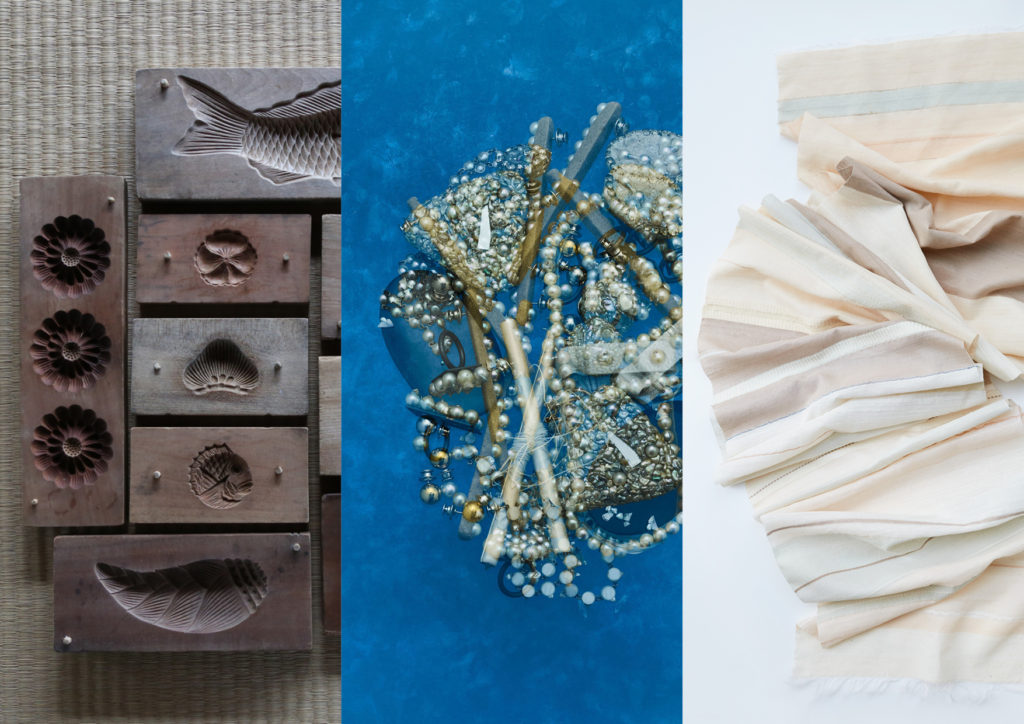midiru-midiru
A garment embodying the sentiments of Yonaguni.
A forlorn butterfly appears out of the blue,
carried by the wind, as it flutters toward the ocean, it reminds me of another world that exists somewhere. It shifts to and fro, from here to there.
The cerulean blue surrounding the island is something special, made of coral that has risen from the ocean. The sea is its mother, and the people were born from this ocean. This is where it all began.
In a blue of deepest blue, with its white foamy waves, it tells us of how the illusory capital once existed here, and the many stories that arrived on the current.
The sacred Gajumal tree stands where the legendary lady Isoba lived, who once led the island to prosperity. From the powerful Gajumal comes a very soft pink.
It is the color of Asadi, a color of maternity.
The Isoba in the Asadi must have wished for peace on this planet.
The women weave the garment, thinking of their precious ones.
They weave, praying for the safety of their beloved, with a caring heart and affection as deep as the ocean. As it was the plants of this island that gave them their life, the fabric, made entirely by the hands of a single person, lends to the energy of the island’s abundant nature, created with a trust in its power.
The yarn is spun, dyed and woven into a garment,
weaving in layers of their own wishes and prayers, then delivered to us in a harmonized form. It is brought to life while thinking of the things they love.
It is a silent and gentle garment reflecting their sentiments.
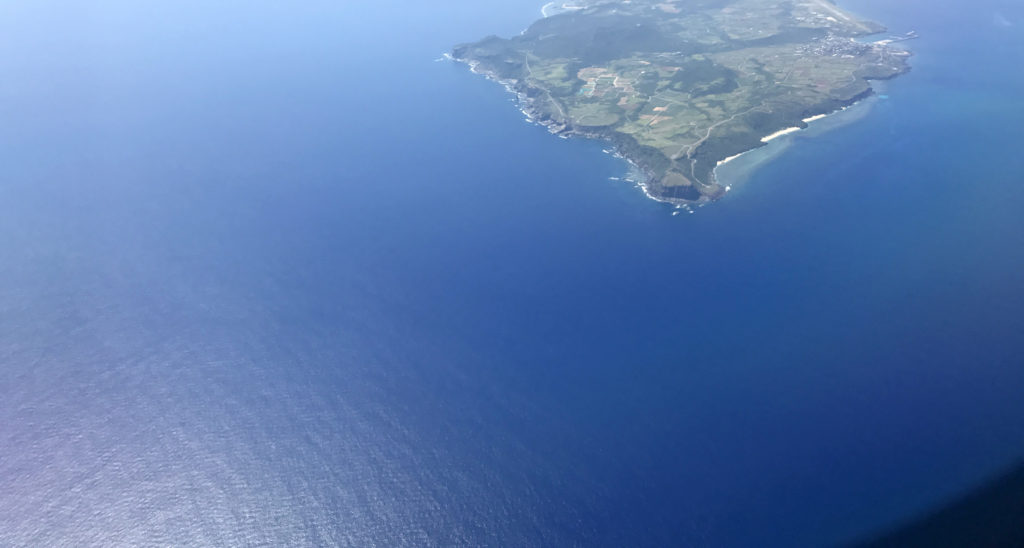
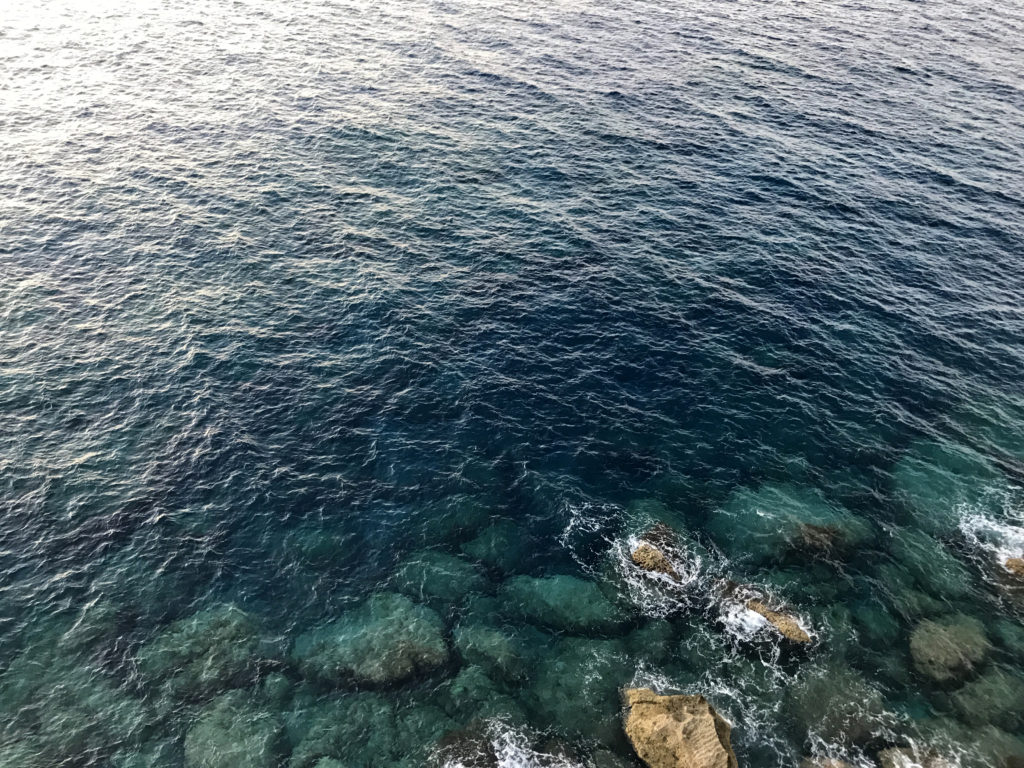
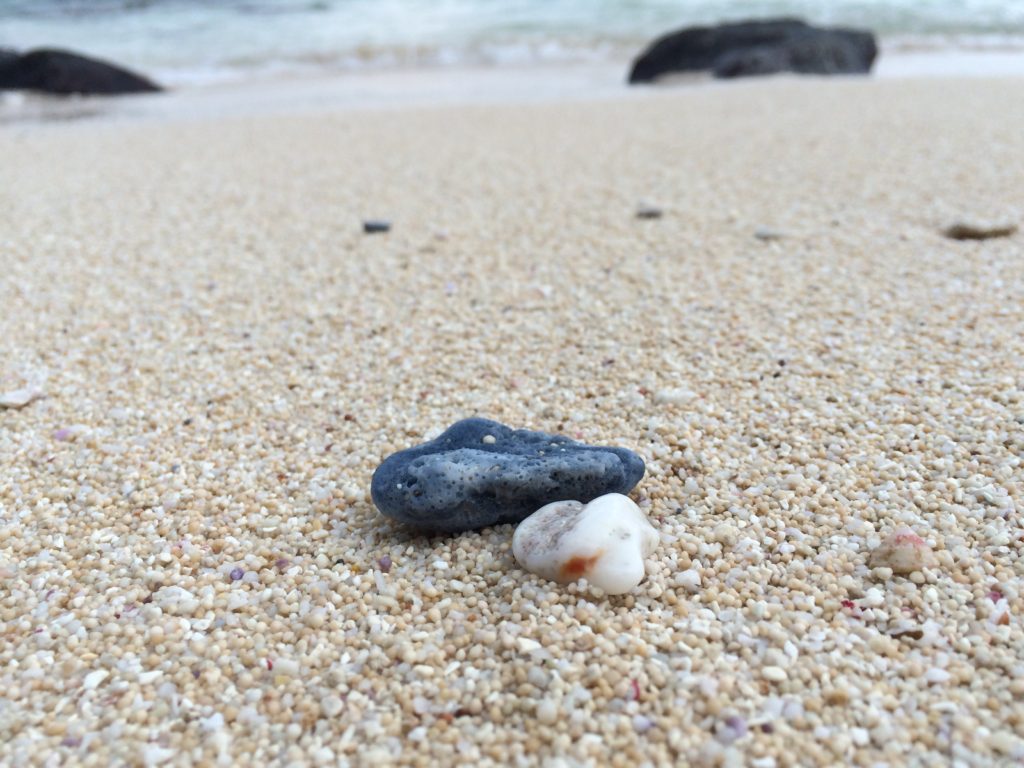
midiru-midiru (in Yonaguni dialect):
the bluest of blue like the deep ocean.
Yonaguni is surrounded in shades of azure. On my first visit to Yonaguni, I was struck by how blue the ocean was. The blue is different from that of the Yaeyama Isles.
It is a cerulean blue that can only be found here. Even the color of coral washed ashore on the coast of Yonaguni is blue. They almost seem as if they were dyed in the sea of Yonaguni. This is something I have only seen here. I can’t help wonder why.
It is a blue full of mysteries.
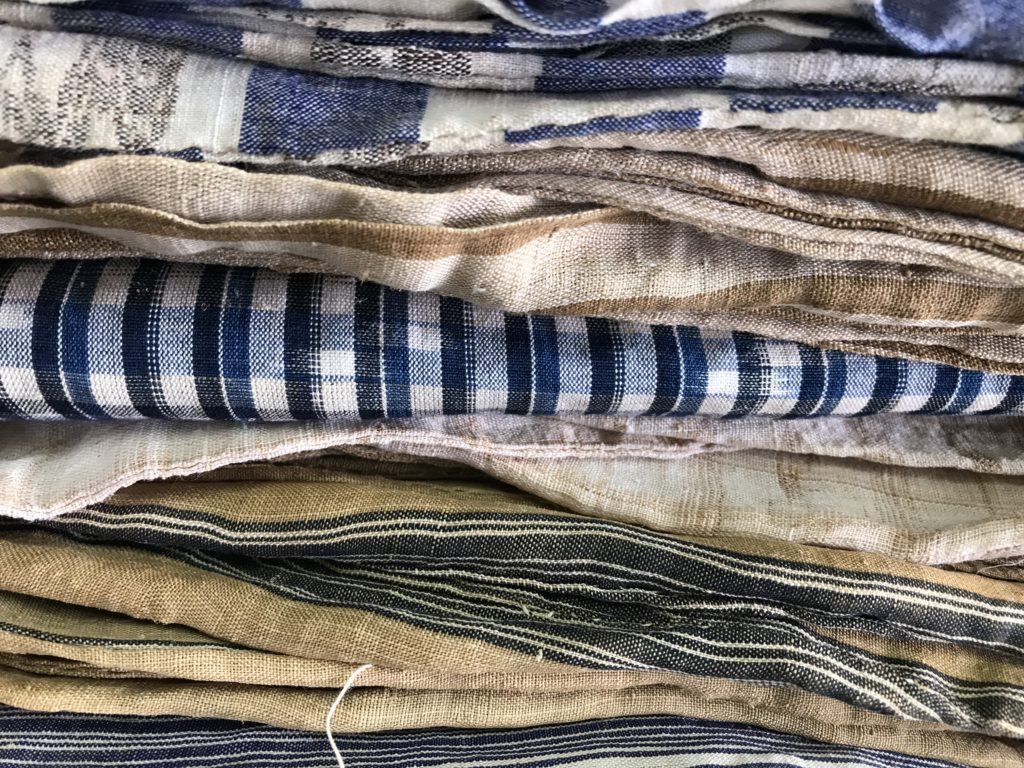
“Midiru-midiru; the wishing cloth” project
Why do these cloths behold such beauty?
It is because they are formed as people’s “wishes” circulate. It is not only economic reasons. But it is about people showing their gratitude to the fruit of what nature can give and then create. This sense of gratitude is connected to the important festive ritual to protect the island, and also protects their loved ones.
With the will of gratitude and fear to nature as a base, the weaving of Yonaguni, and Yaeyama (Isles) is about weaving in this universe, with that someone in mind. And because this life in the wilderness that supports this exists, this cloth will feel more respectful and beautiful.
I present these beauty of textile in Yonaguni to the world, this is called ” midiru midiru”.
1.YARN
1)Choma plants
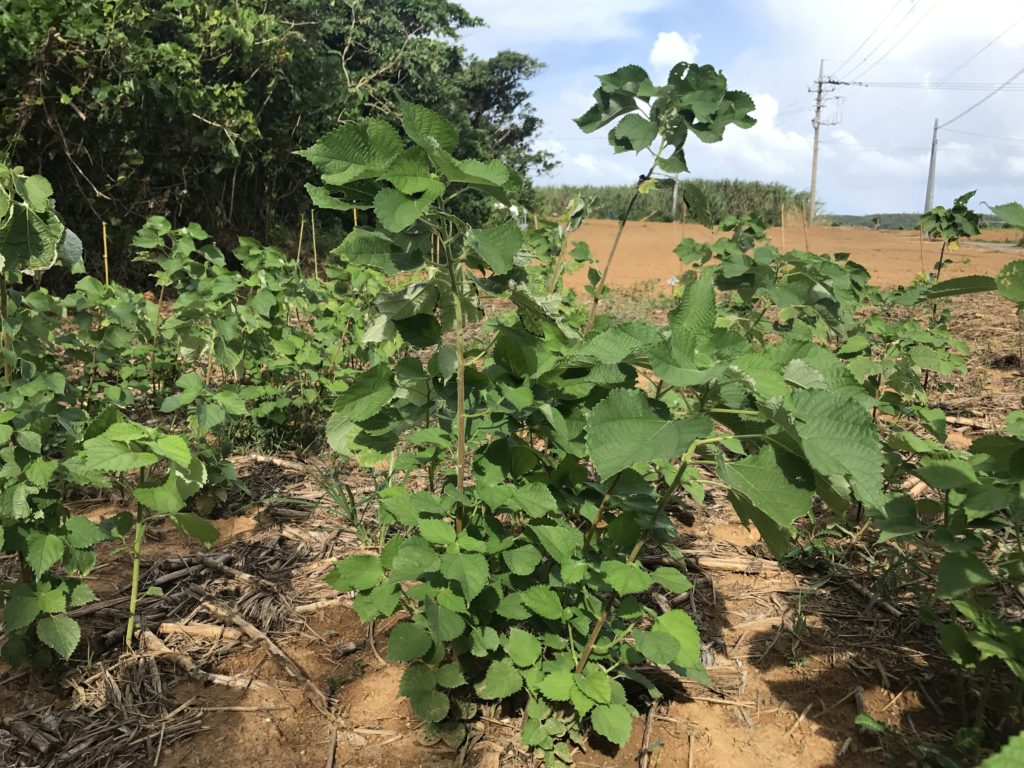
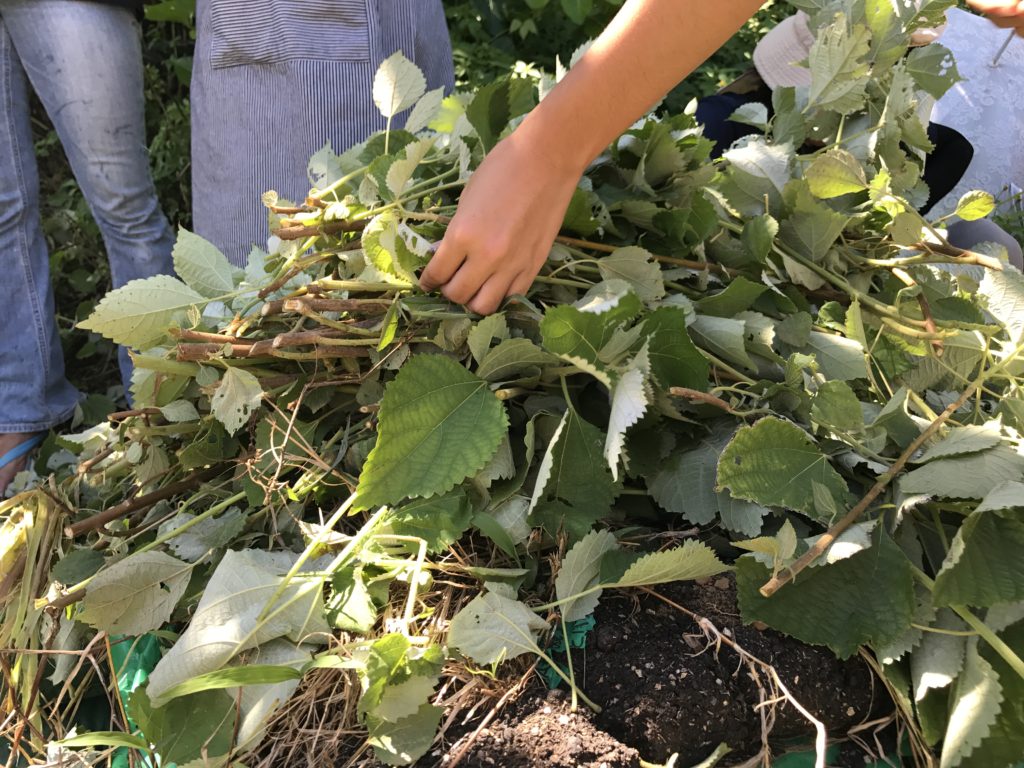
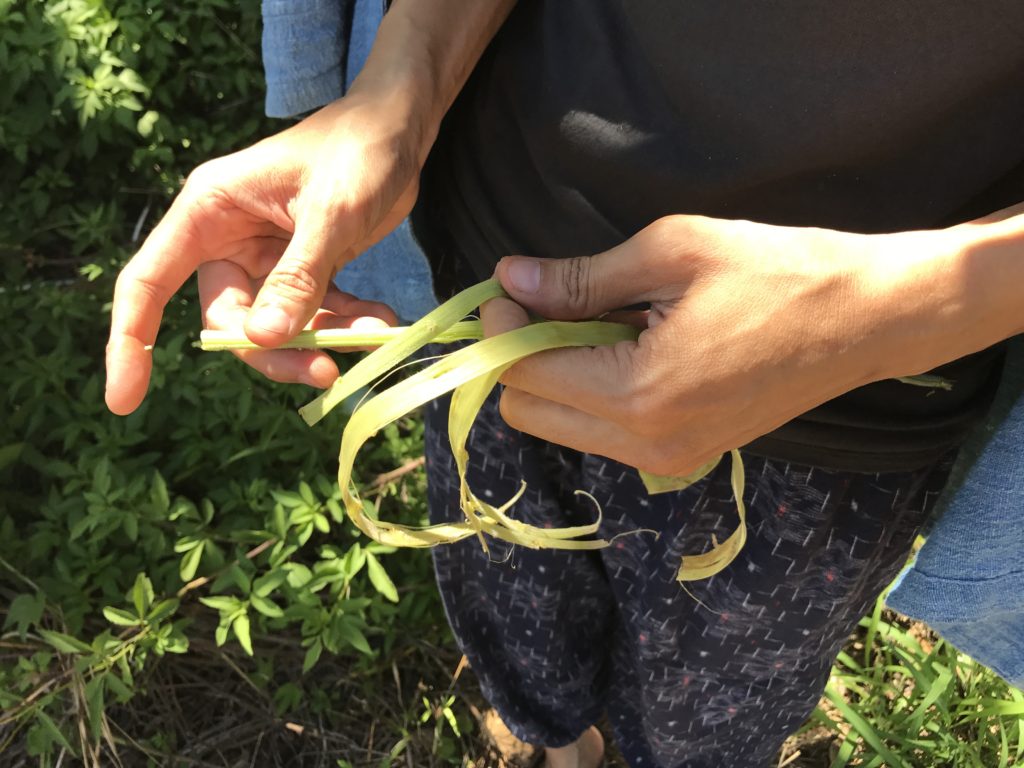
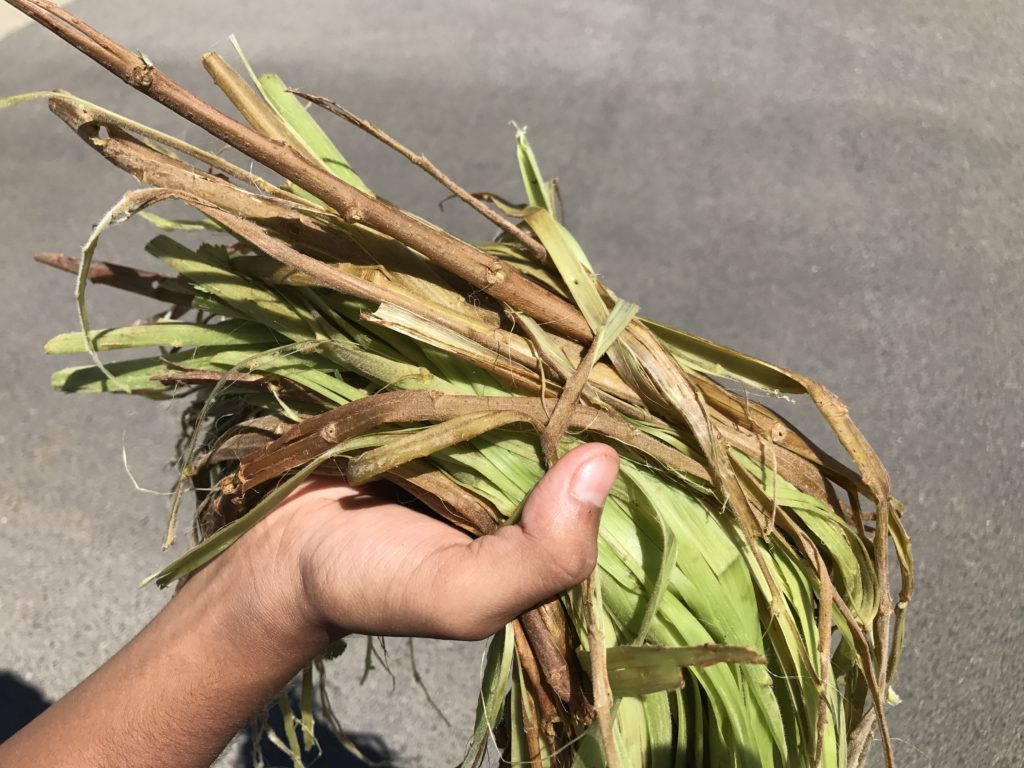
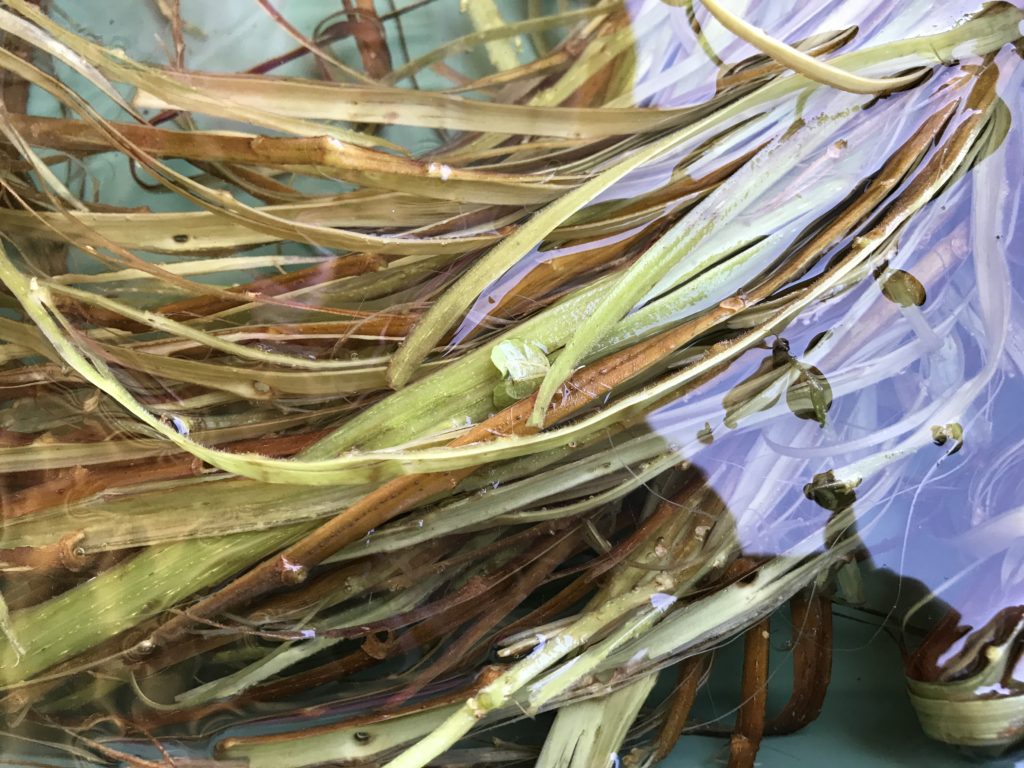
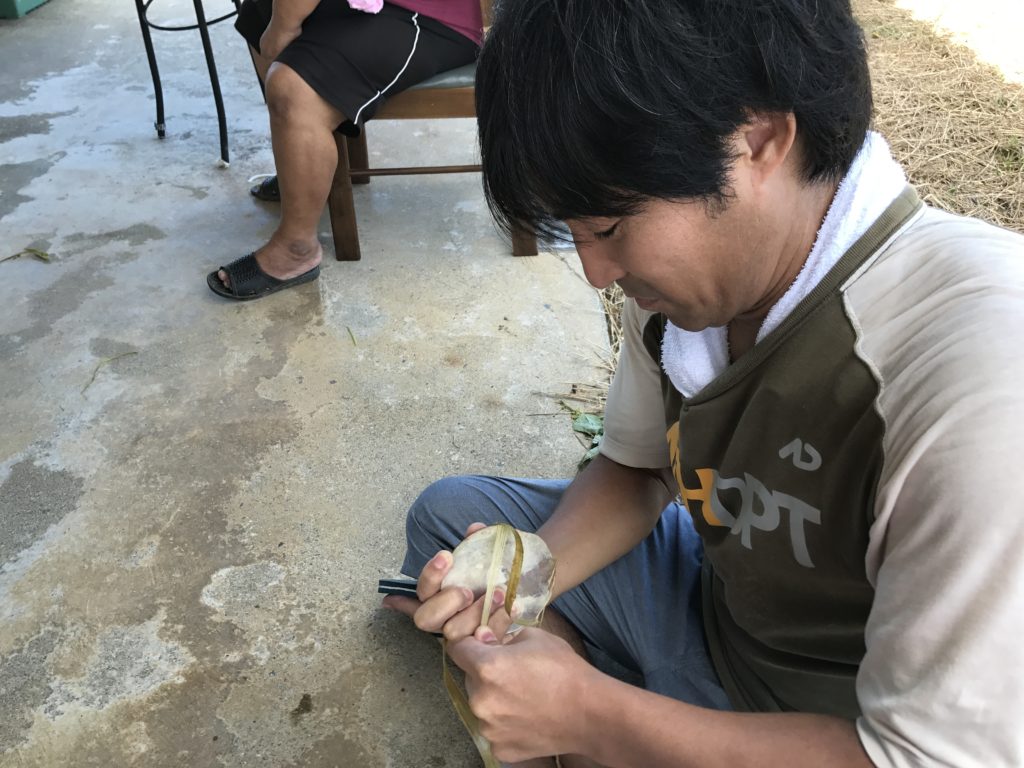
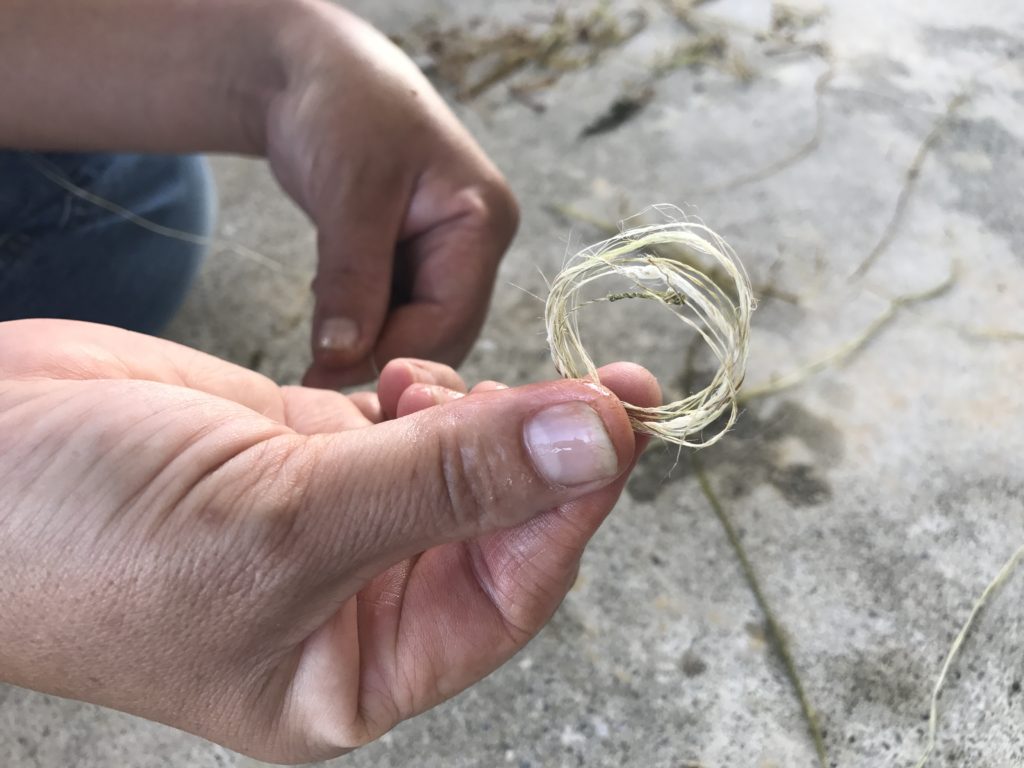
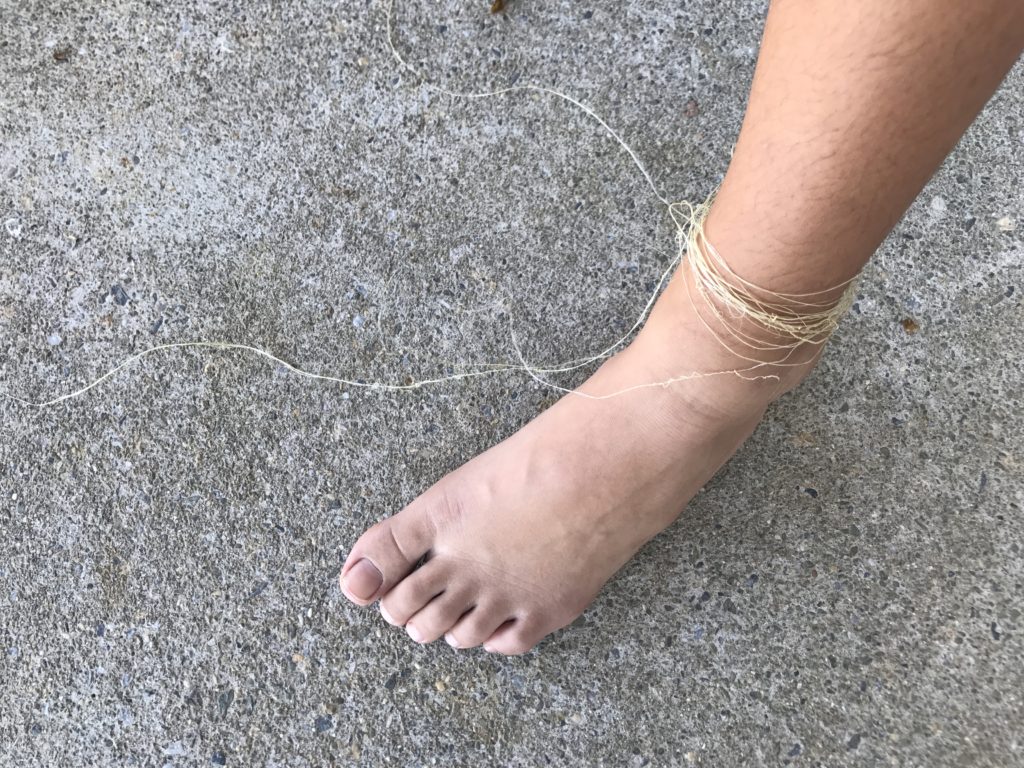
2) History of Yarn in Japan
Japan does not have an extensive history in producing “silk yarn”, as it was “hemp yarn” that was mainly used since older times. According to ancient texts such as the Koijiki, Nihon-shoki, Haniwa-zushu and Kogo-juken, the fiber used for fabric in Japan since the ancient times was “bark” (or skin) such as kozo, kuzu, yamafuji, shinanoki and heranoki, as well as hemp, which comes from grass (skin) fiber. To list yarn from old to new, it is tree (bark fiber), hemp (grass fiber), silk (animal based fiber) and cotton (plant fiber)
Hemp yarn was produced as tax from ancient times. And with hemp fiber (the source for hemp related yarn), there was hemp (pronounced “o” in Japanese) and corm (pronounced “karamushi”). In the present context, “o” means hemp and “karamushi” means ramie (“choma” in Japanese).
3) Reading the tales of marriage to the serpent god and the mystical powers of ramie (choma in Japanese) through the Kojiki (Records of Ancient Matters).
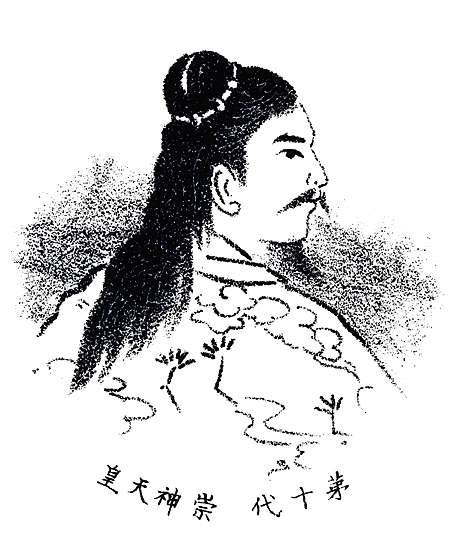
The episode of the holy marriage of god Ohmononushi can be found in the passage of Emperor Sujin. The serpent god is signified as a snake crawling through a keyhole. Guided by the hemp yarn, it becomes the key to lead us to the mysterious visitor. In most myths, they seem to adopt hemp yarn in the process of identifying the true face of the unknown. In this way, by recognizing the magical powers of ramie, there is the myth of the yarn-weaving lady who has control over the serpent god and hemp yarn. Therefore, there is a belief in the magical powers of ramie and the magical forces of the weaving lady who control the hemp yarn.
In this story, as written in Shinobu Origuchi’s “God’s Bride”, the weaving lady (called Tanabatatsume or “God’s Bride” in Japanese) is versed in the use of hemp yarn and awaits the god (the god of lightning with a serpent’s body), waiting and weaving by the water. Compared to silk, hemp needs moisture and is not best suited for a dry environment. Moreover, it requires huge amounts of cold water in its yarn making process.
So it connects us to the weaving lady who oversees the magical powers of ramie as she sits by the water (by Shinobu Origuchi “Woman of the Water”)
Ramie (choma) held magical powers that reveal the true nature of the unknown, by drawing a line between the netherworld and our own.
In other words, the lightning god with a serpent’s body has always been connected with plant fibers and grass/tree fabric such as hemp, more so than silkworms.
The silk and hemp groups have two opposite qualities. “When weaving with silk, as the yarn is spun by silkworms, it has an affinity to positive heat. And when weaving with hemp cloth, as it is made from hemp, it takes to negative heat. Therefore, silk will keep you warm in cold temperatures and hemp cloth will keep you cool when hot.
Such is the nature of yin and yang.” Hemp also prefers water.
In other words, silk is something that came later.
Hemp has been used traditionally in Japan from ancient times, regarded as holding magical powers and being a sacred object.
2.COLOR
1) color drawn from plants
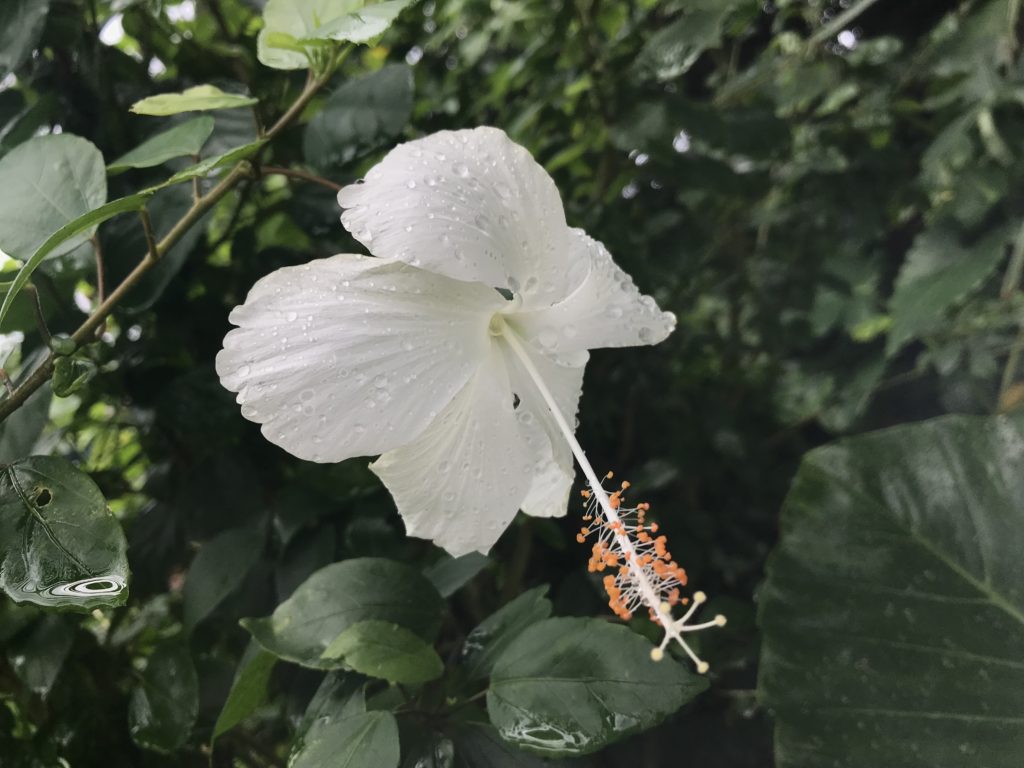
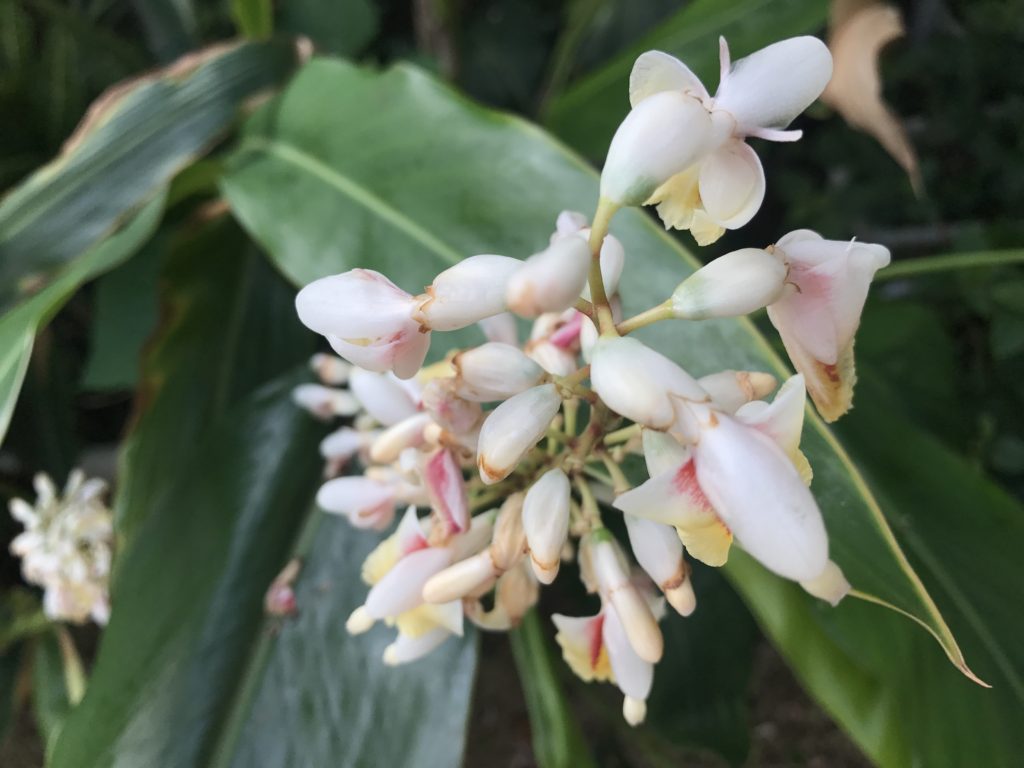
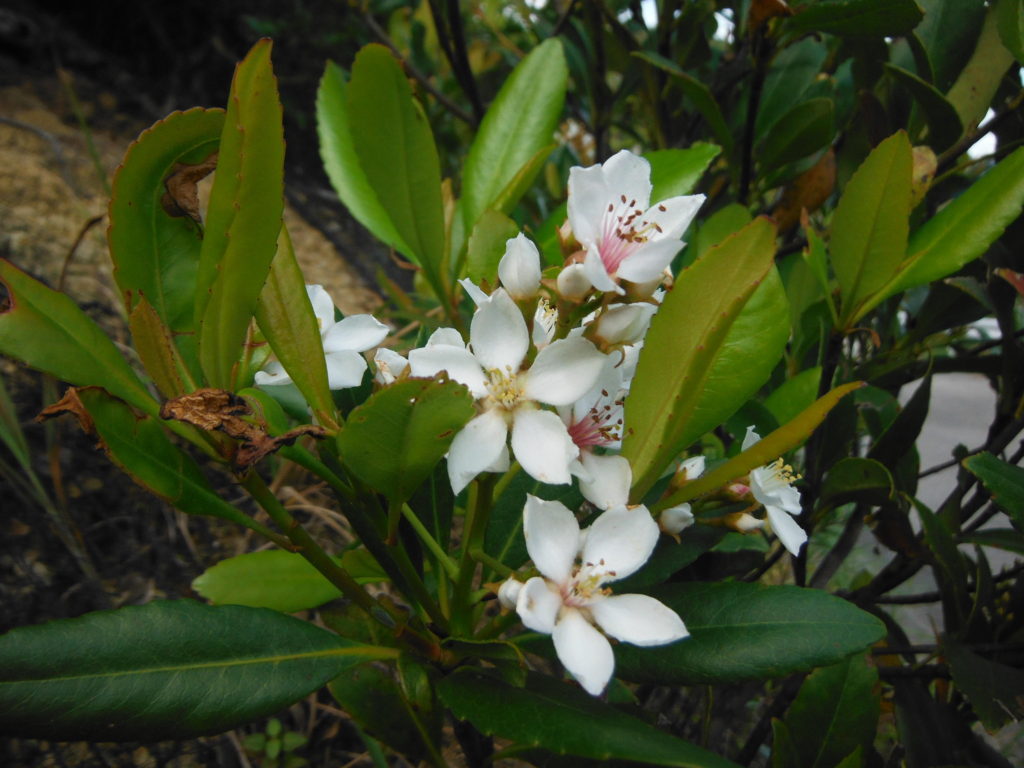
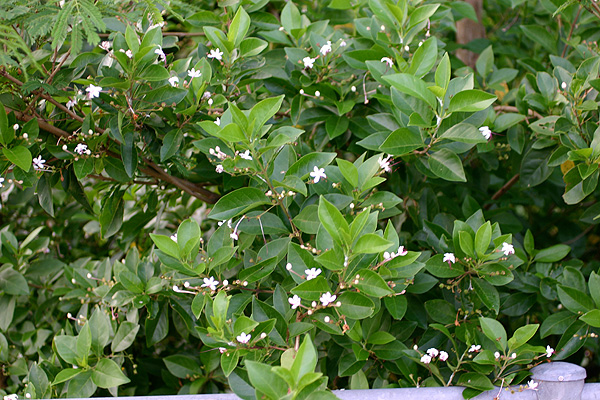
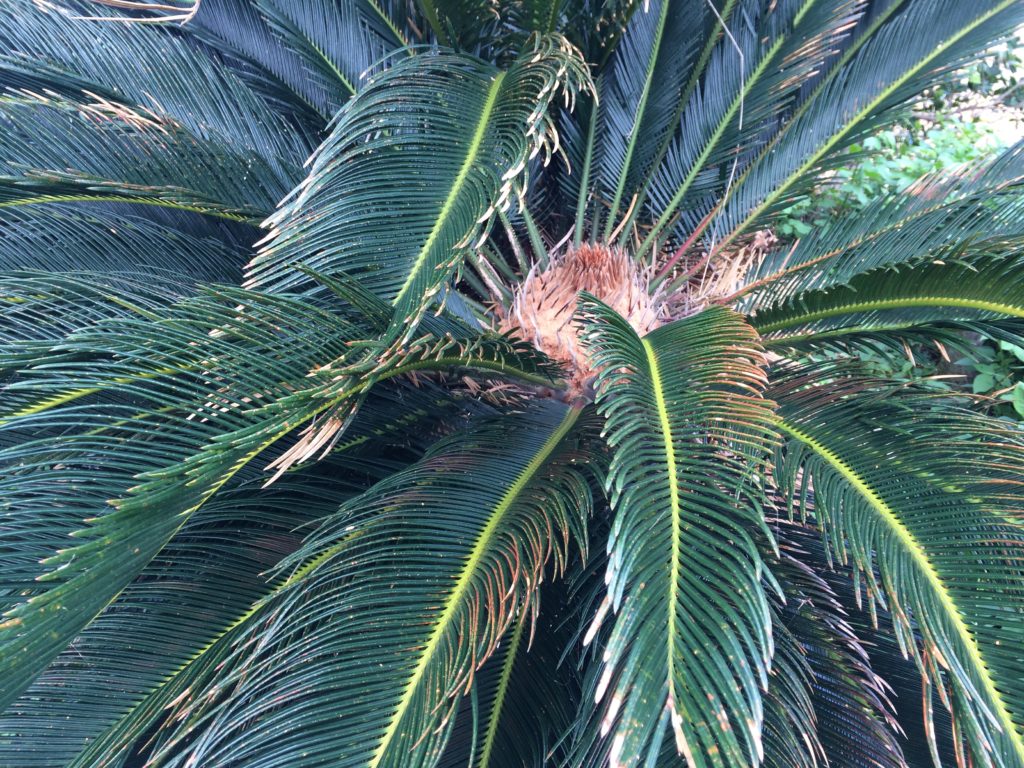
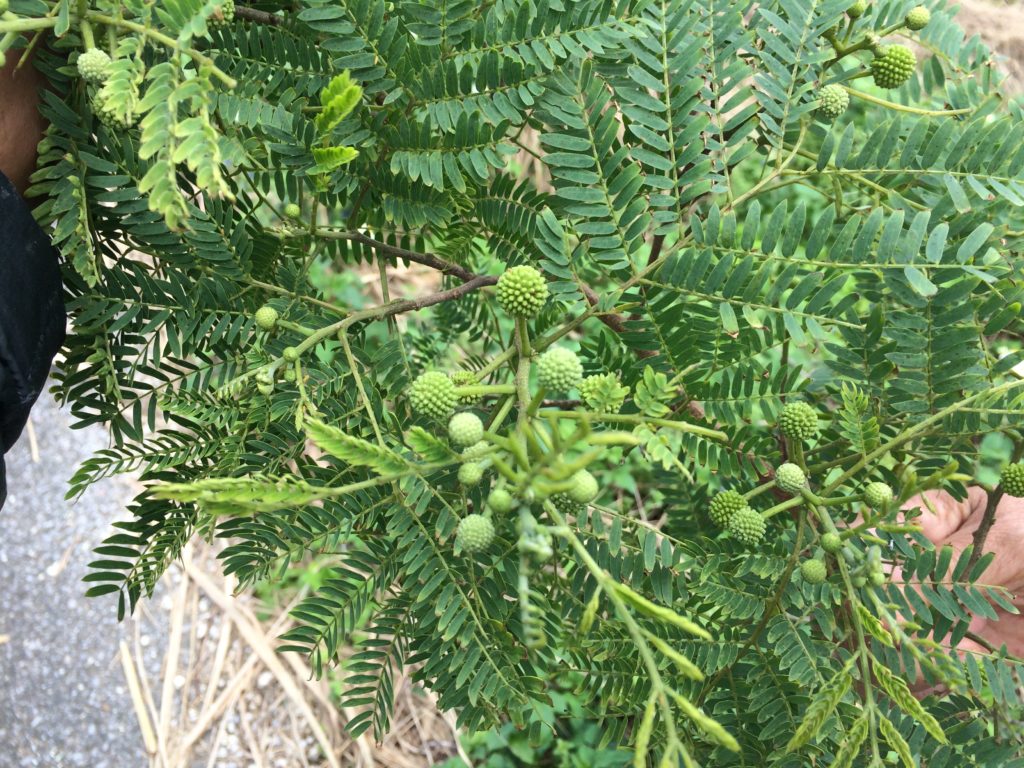
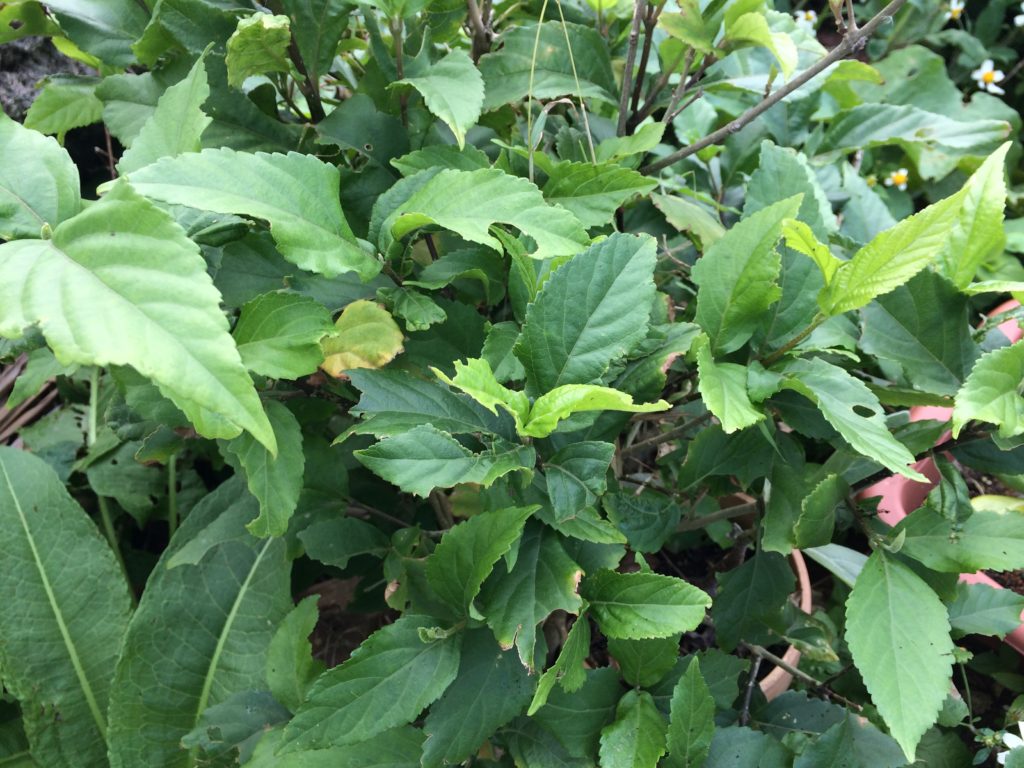
2) Variously hidden colors: Banyan Tree, Gajumal
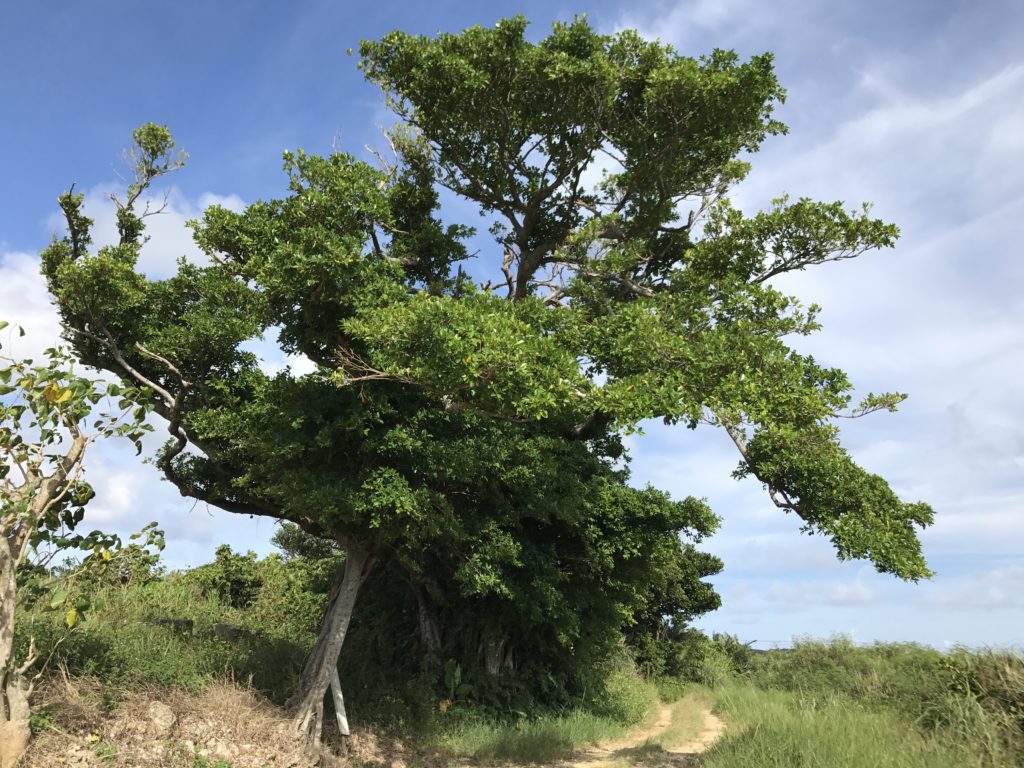
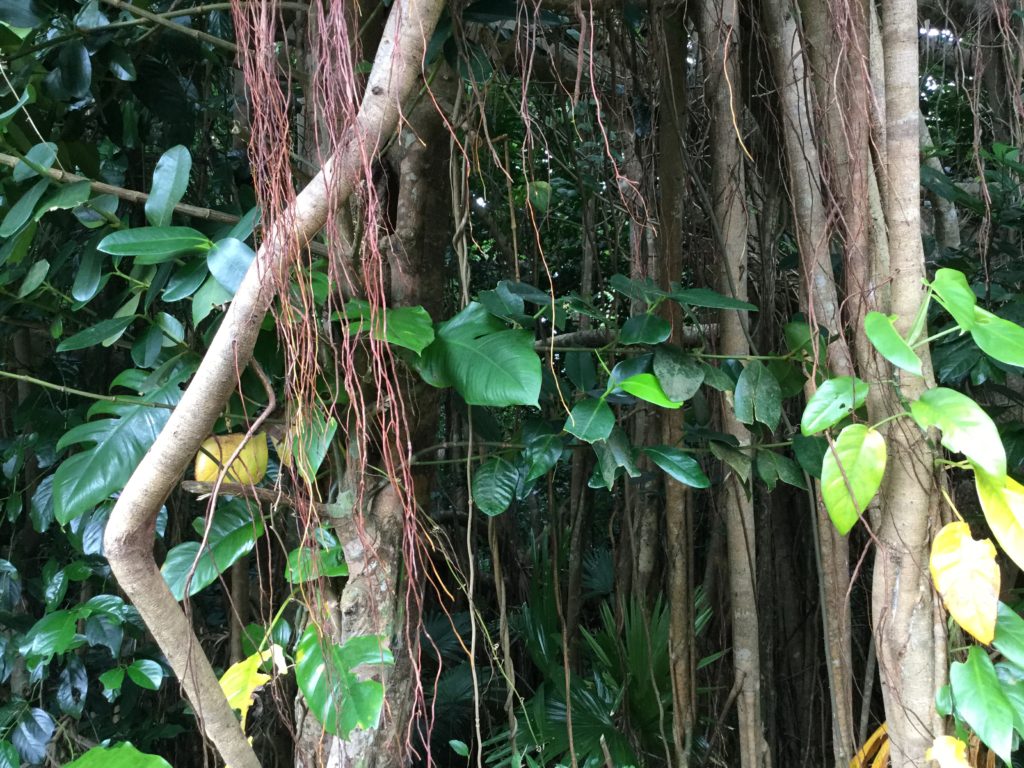
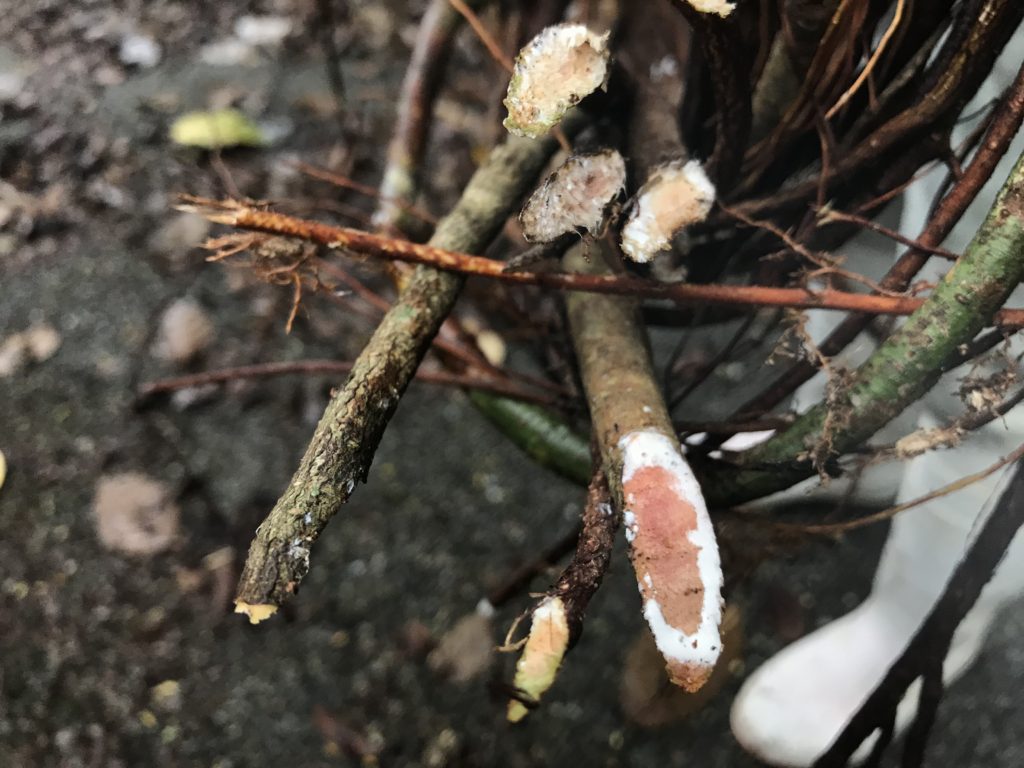
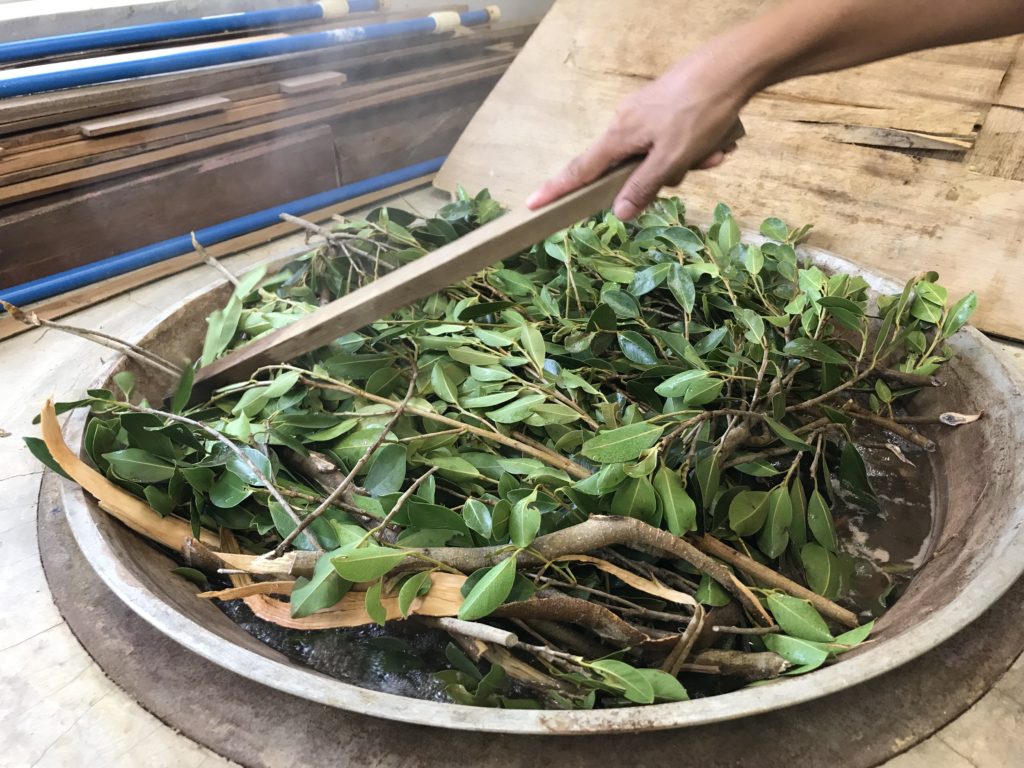
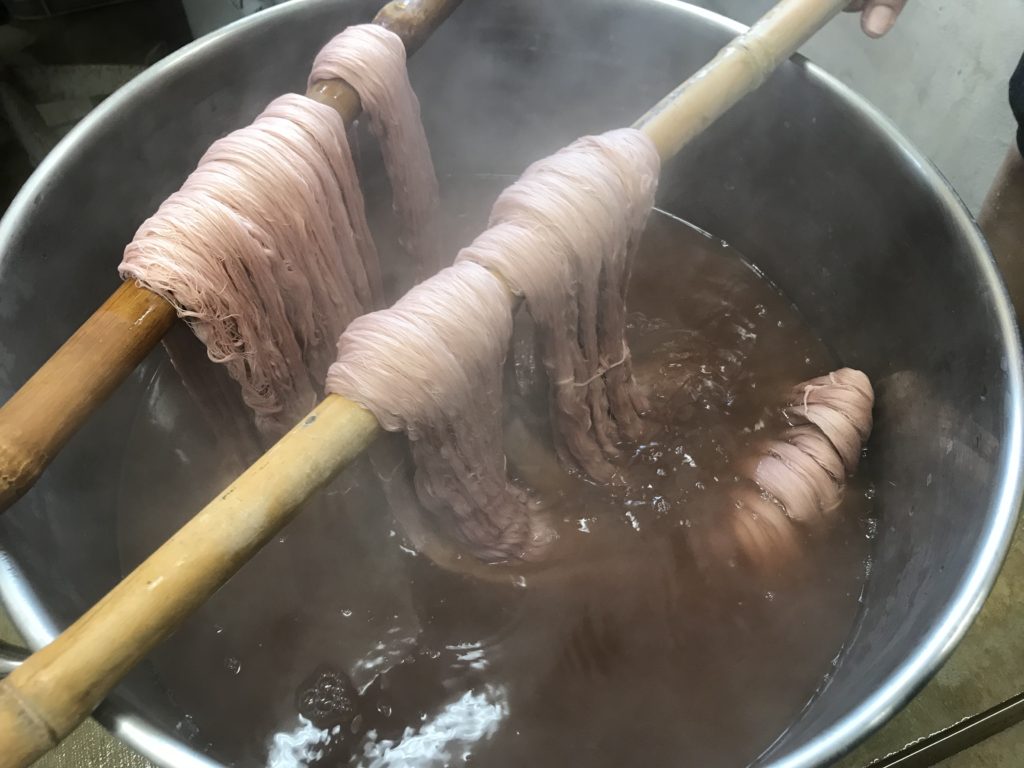
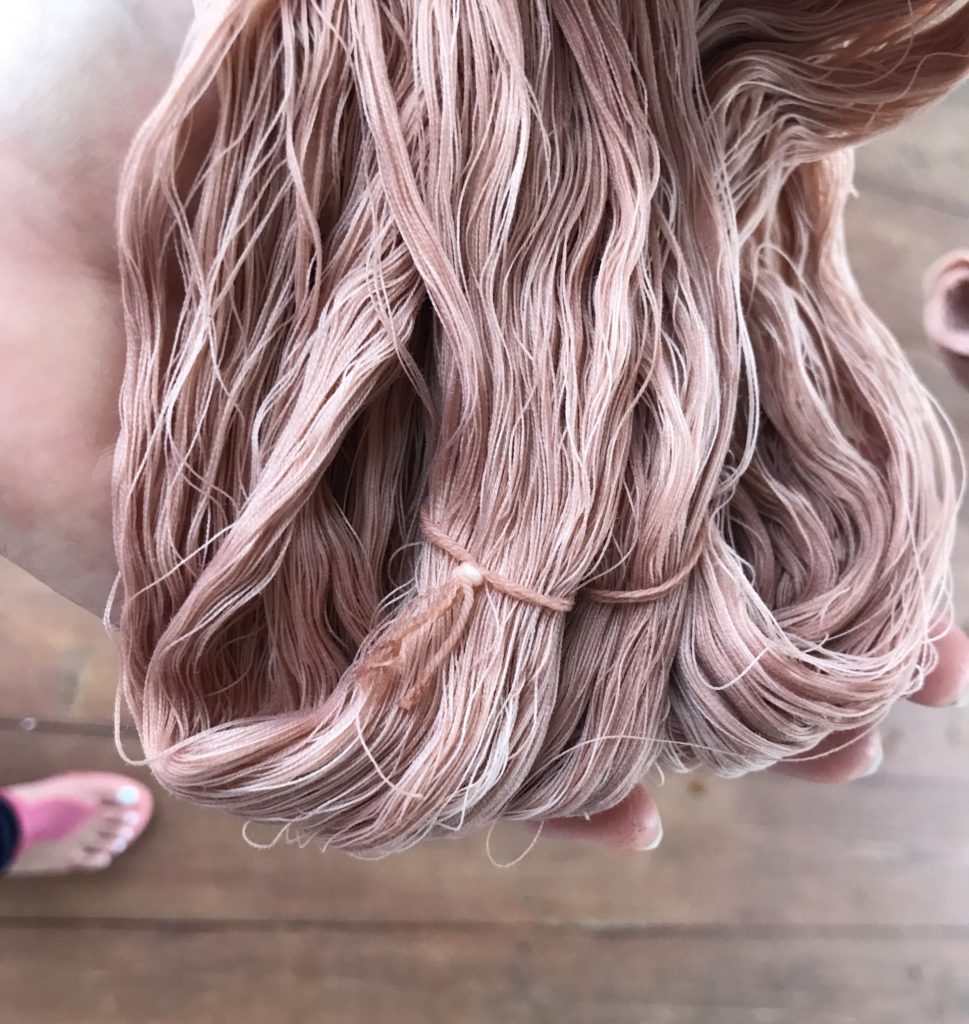
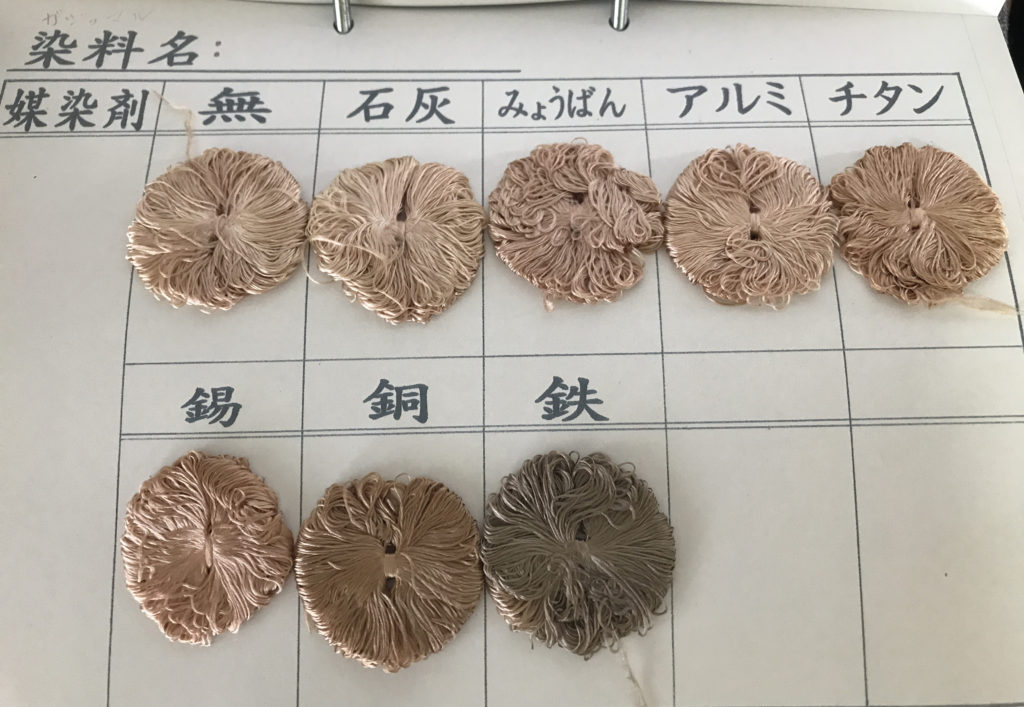
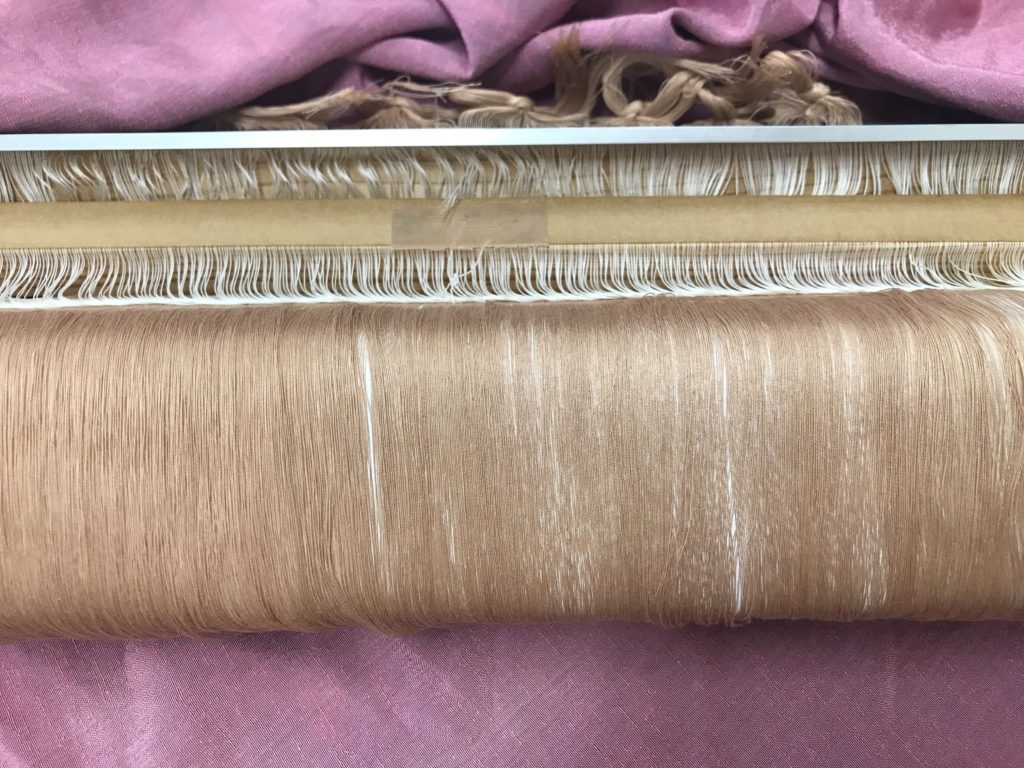
In the Yonaguni dialect, the color taken from the Gajumal tree is called Asadi, which gives a soft pink tint. The Gajumal is a tree of the gods and is known where the spirits dwell. Yet it even has the force to demolish buildings. And from this powerful tree comes a most gentle pink.
With some plants, when dyed with color from the stem or trunk, the color may sometimes turn out even more beautiful than when it is taken from the flower.
It goes to show that things one does not normally see, such as sentiment, or things at the core, may be unveiled to us as color.
3) Cerulean blue and lazuline
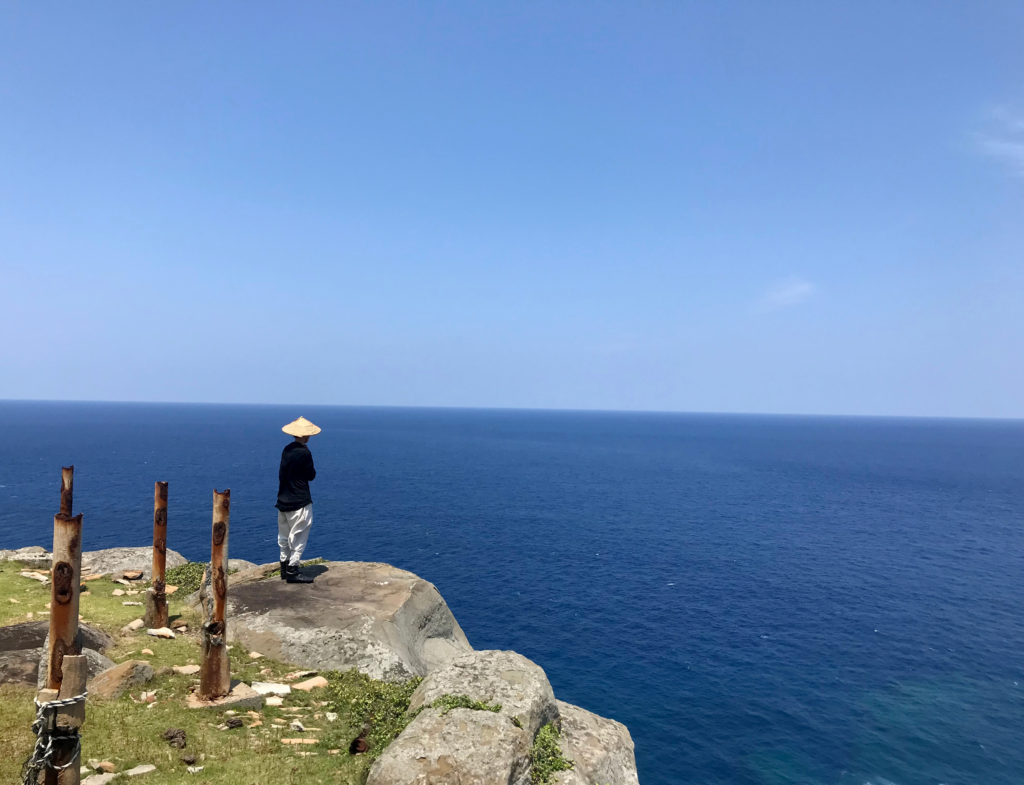
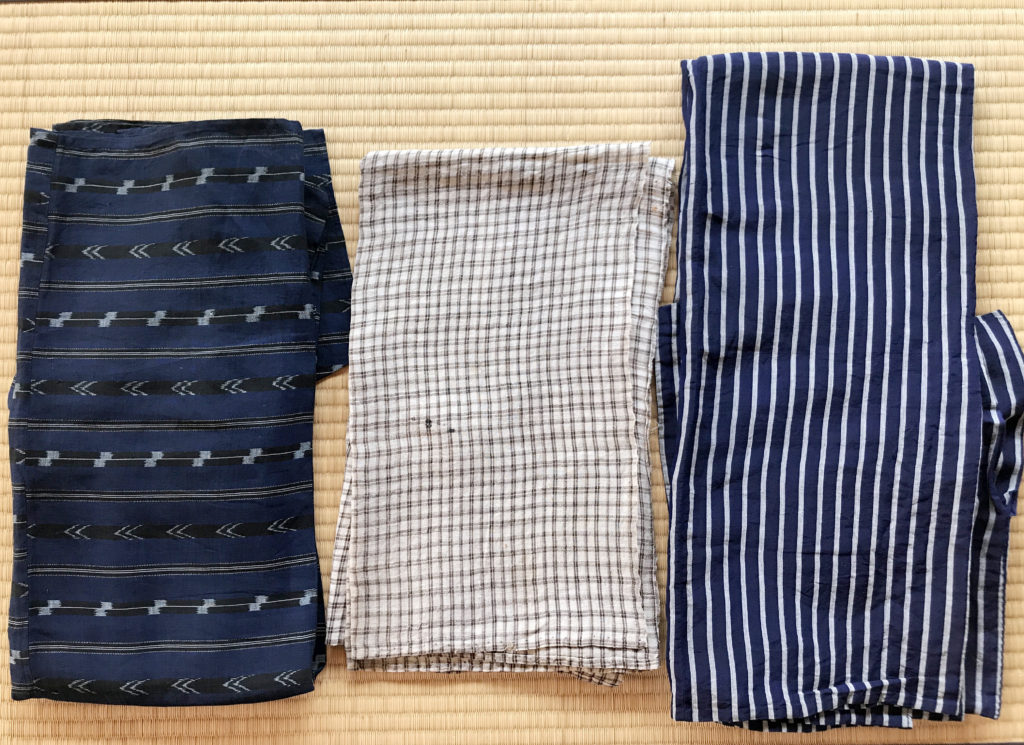
It is the Yonaguni dialect that means this color blue is that of the deep blue ocean.
It can also be used to express the pattern of woven garments.
The striped pattern that uses cerulean blue for both horizontal and vertical yarns is called Midiru-midiru.
4) The oceanic path to weaving
They have learnt the patterns for weaving from overseas. Because of this environment, we can assume that exchange with cultures overseas through the oceanic path was quite frequent.
3.To weave
1) Weaving as philosophy
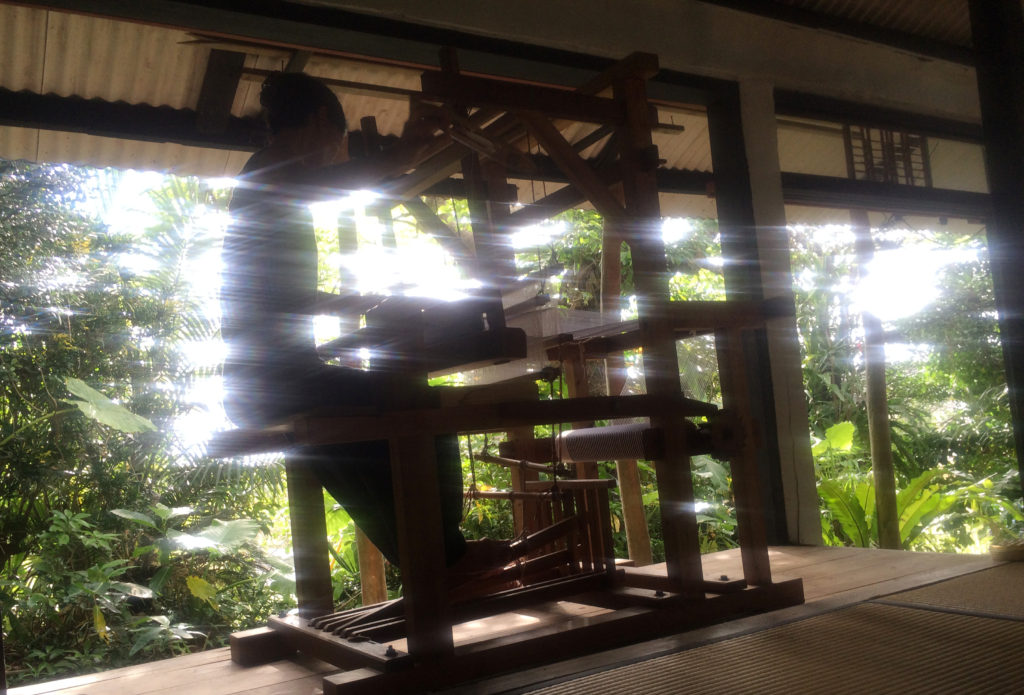
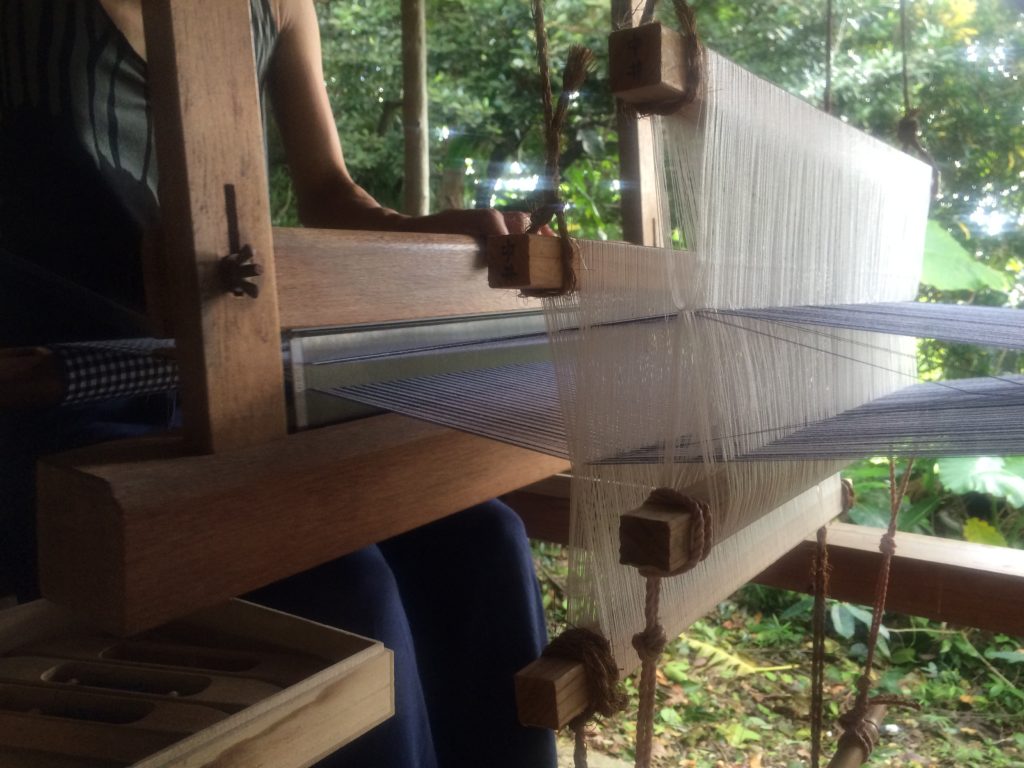
Freely weave the warp (vertical) yarn in between the weft (horizontal) yarn, which is more stable. The weft yarn becomes an act of weaving your emotion into the vertical warp. Isn’t this like the act of weaving your own destiny? “Create dialogue with your inner emotional landscape, become conscious what comes to you and make them into material things.” This is how a story is completed for the first time. Weaving gives life to the yarn and color. Weaving is philosophy.
4. What is the wishing cloth?
1) Where the truly generous spirit exists.
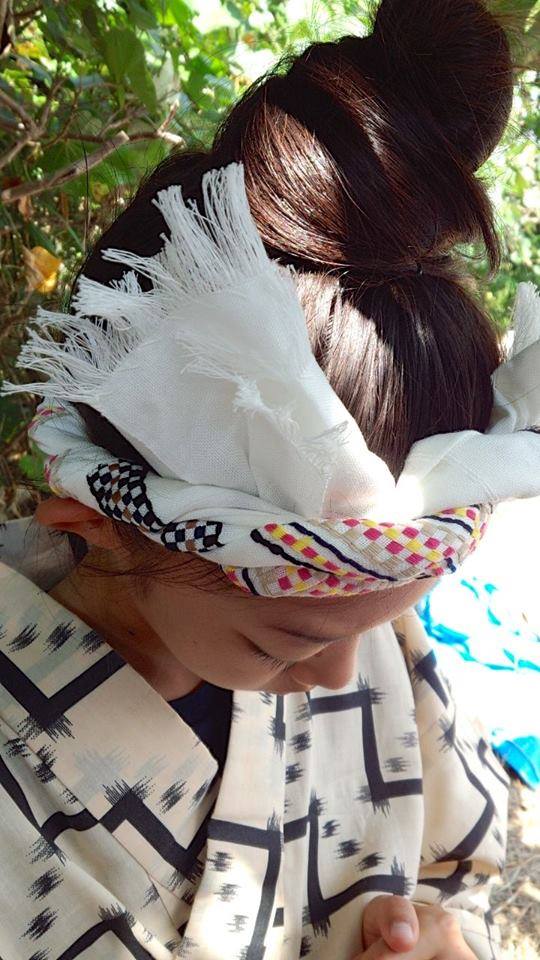
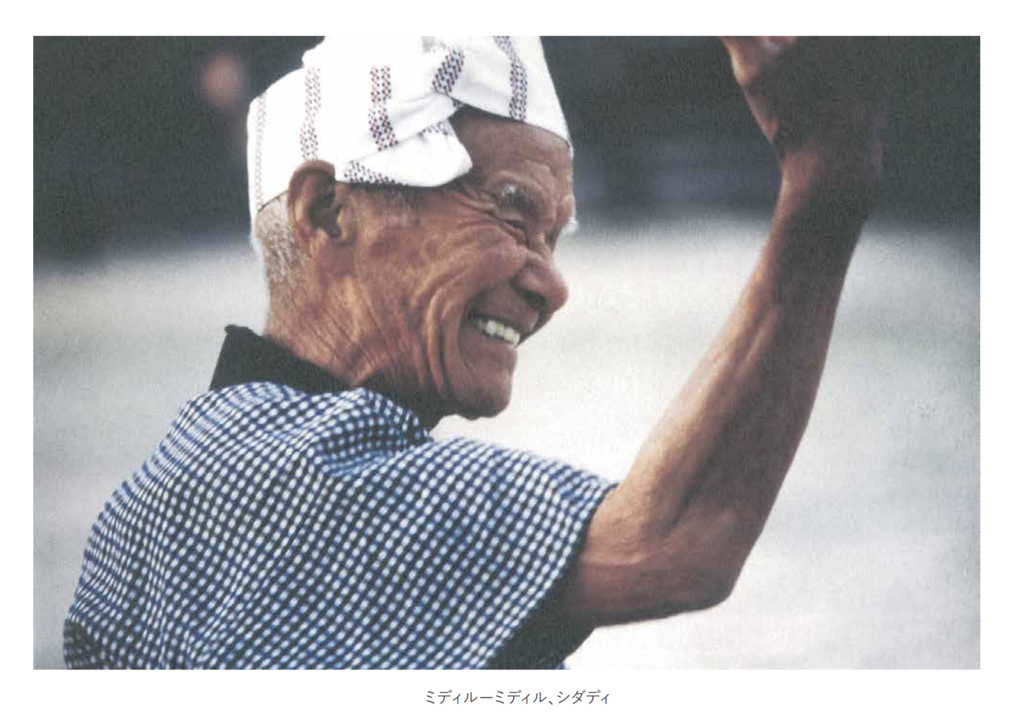
Shidadi, the cloth is woven with one’s wishes; as the sister (woman) thinking of her loved one, of her brothers and sisters, and the safety and happiness of her precious ones. It is the true and generous spirit that weaves the cloth. In such cases, the act of weaving almost becomes an act of praying.
“When the young person, almost at his deathbed, is questioned of his own life, and his own existence, he/she throws away his/her culture, and throws off his/her clothes. Then, he/she sees the place of his/her soul, and can identify the place of his/her sister’s true generous spirit. When this happens, the young one can cross over the distance in space in reality, and can sense that he/she is in the same place as his sister. In other words, he learns that the two places are, in fact, one place. What actually helps him is this cloth and his sister’s wish, and he can cross over life and death where the cloth is.”
(Keiji Iwata “The Anthropology of God” p171-172)
I believe that the true face of woven garments in Yonaguni and Yaeyama is expressed in the Shidadi and Tesaaji.
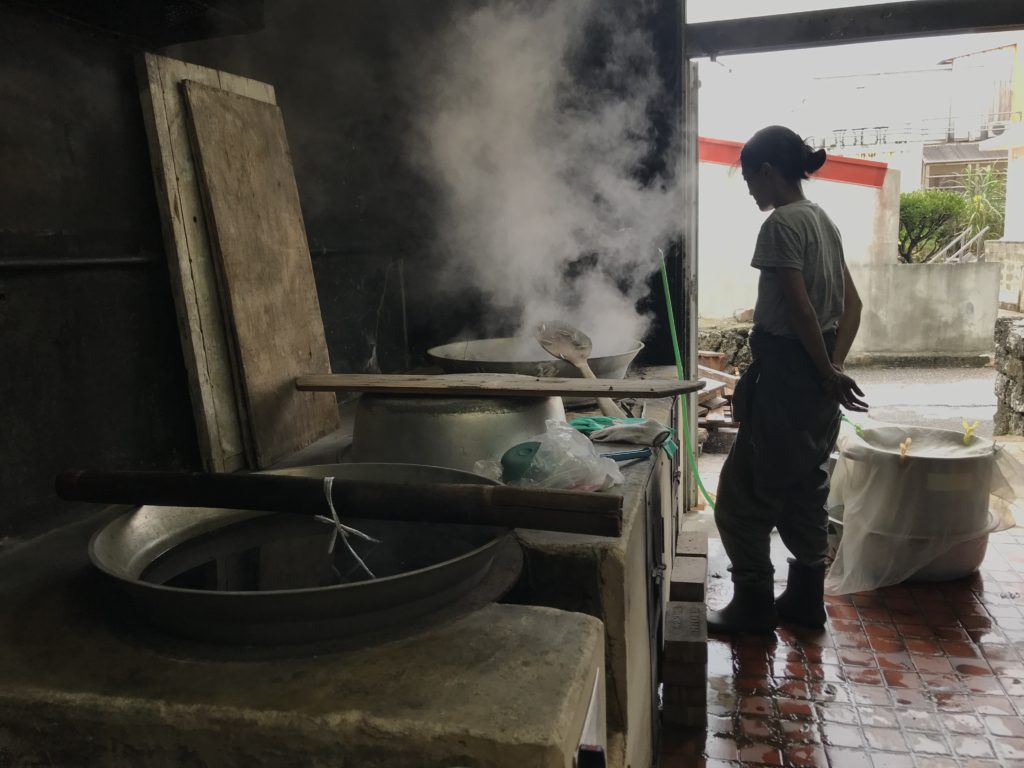
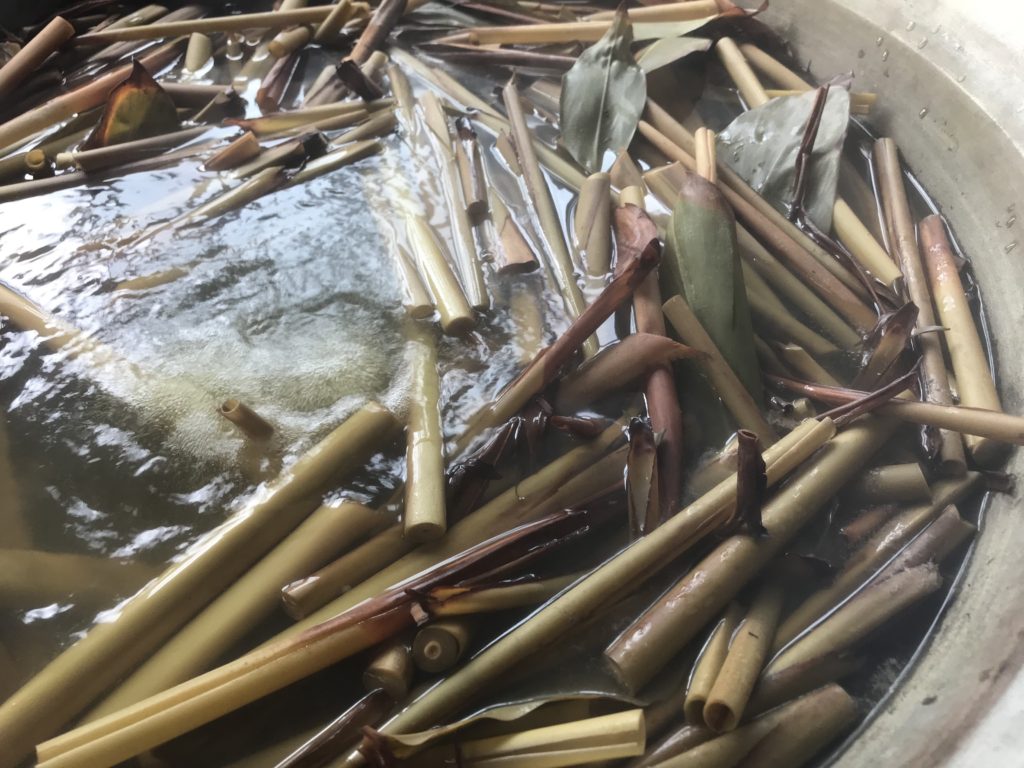
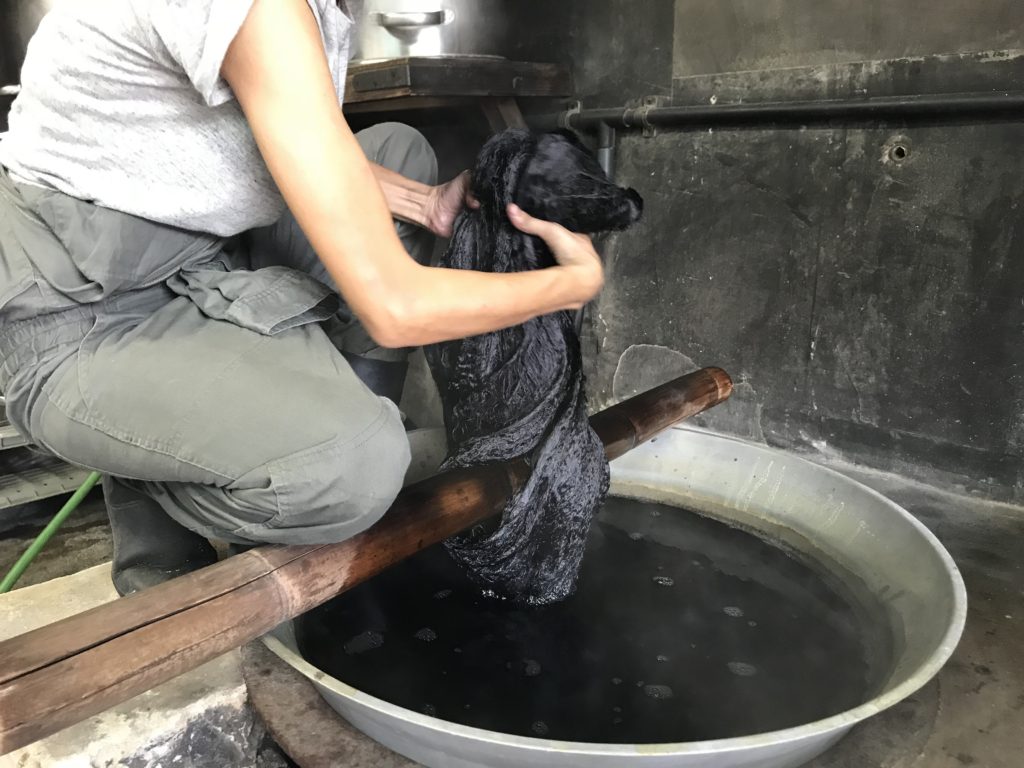
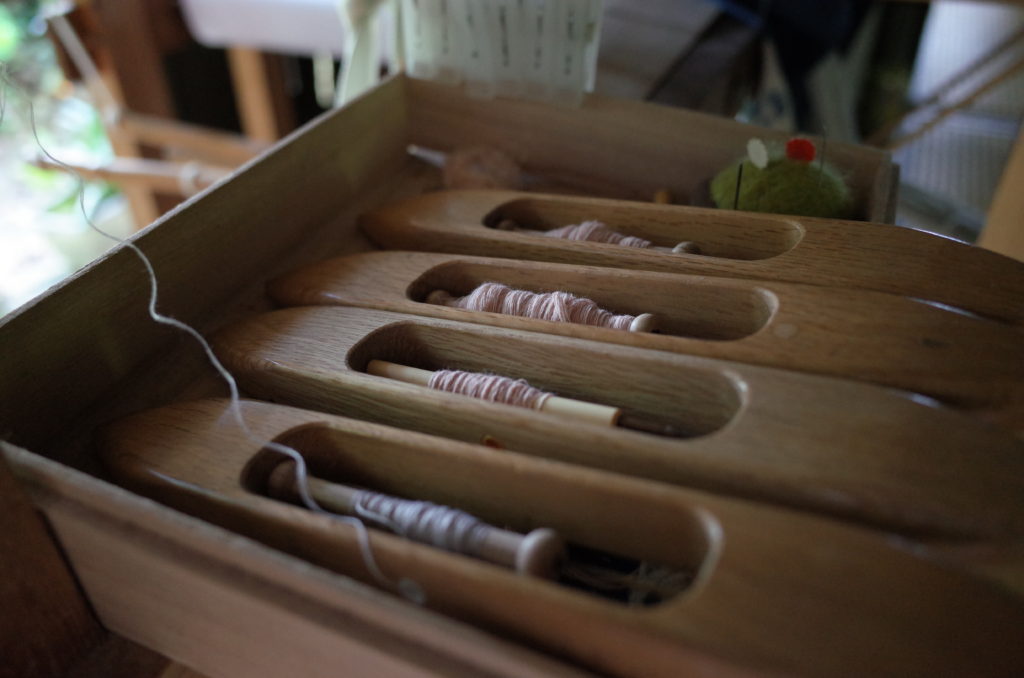
The yarn is spun, dyed and woven into a garment…
“It is not intended to create something beautiful, but rather how things made with a true spirit can learn its way to beauty.Without taking this path, one may never reach that point of beauty”. Fukumi Shimura “A Color in a Lifetime”
Photo: INO
ONLINE STORE
You can purchase the items created in the past projects from here
